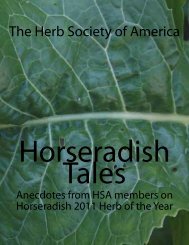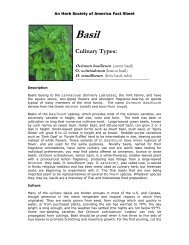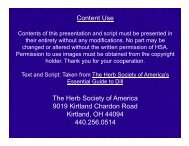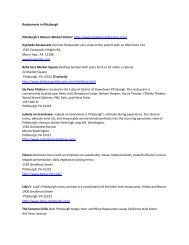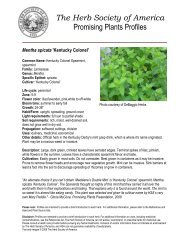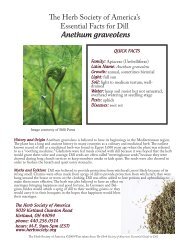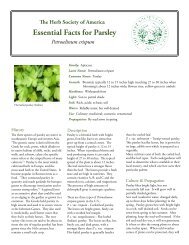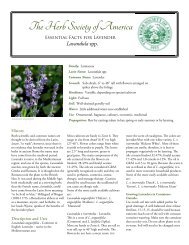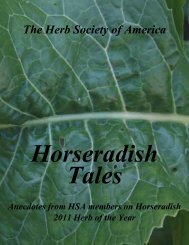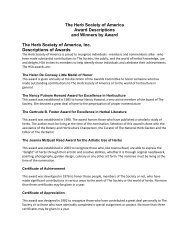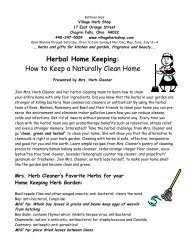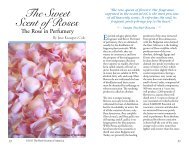The Beginner´s Herb Garden - The Herb Society of America
The Beginner´s Herb Garden - The Herb Society of America
The Beginner´s Herb Garden - The Herb Society of America
Create successful ePaper yourself
Turn your PDF publications into a flip-book with our unique Google optimized e-Paper software.
seeds planted indoors have<br />
developed two pairs <strong>of</strong> true<br />
leaves, transplant them to<br />
individual containers. Place<br />
them in a cold frame or<br />
protected area to let them<br />
become accustomed to cooler<br />
temperatures.<br />
Plant seedlings in the garden<br />
when all danger <strong>of</strong> frost is<br />
past and the soil passes the<br />
“clutch test.” If a handful <strong>of</strong><br />
soil crumbles easily, it is ready<br />
to accept plants. If it stays in<br />
a lump, planting should be<br />
delayed.<br />
<strong>Herb</strong>s can be reproduced<br />
by cuttings. Choose sturdy<br />
stems three or four inches<br />
long, and cut them just below<br />
a node. (A node is the swollen<br />
area on the stem from which<br />
the leaves and axillary buds<br />
develop. If the node is inserted<br />
into soil, roots can emerge<br />
from it also.) After removing<br />
the lower leaves, insert the<br />
stems in a pot or flat <strong>of</strong> moist<br />
vermiculite and perlite. Firm<br />
the medium around the<br />
cuttings, set them in the shade, and keep<br />
them moist. <strong>The</strong> use <strong>of</strong> a rooting hormone<br />
may speed the formation <strong>of</strong> roots but is not<br />
essential to successful propagation.<br />
10 ©2010 <strong>The</strong> <strong>Herb</strong> <strong>Society</strong> <strong>of</strong> <strong>America</strong>




